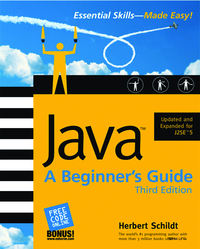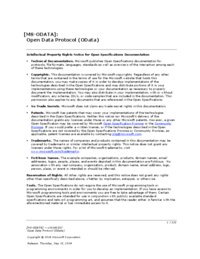Usuario "robec"
Se han encontrado 3 Coincidencias
Java: A beginners guide, third edition
Programación en Java
129 Visitas | 166 Descargas | 2015-01-16 15:55:03 | robec
Java is the preeminent language of the Internet. Moreover, it is the universal language of Web programmers around the world. To be a professional Web developer today implies proficiency in Java. Therefore, if Internet-based programming is in your future, you have chosen the right language to learn—and, this book will help you learn it. The purpose of this book is to teach you the fundamentals of Java programming. It uses a step-by-step approach complete with numerous examples, self-tests, and projects. It assumes no previous programming experience. The book starts with the basics, such as how to compile and run a Java program. It then discusses every keyword in the Java language. It concludes with some of Java’s most advanced features, such as multithreaded programming, generics, and applets. By the time you finish, you will have a firm grasp of the essentials of Java programming. It is important to state at the outset that this book is just a starting point. Java is more than just the elements that define the language. Java also includes extensive libraries and tools that aid in the development of programs. Furthermore, Java provides a sophisticated set of libraries that handle the browser user interface. To be a top-notch Java programmer implies mastery of these areas, too. After completing this book, you will have the knowledge to pursue any and all other aspects of Java.

[MS-OData] Open Data Protocol
OData
70 Visitas | 549 Descargas | 2015-01-21 03:27:39 | robec
El protocolo Open Data (OData) habilita funcionalidades que utilizan tecnologías web de uso común, como el protocolo Atom Publishing (AtomPub), JavaScript Object Notation (JSON) y XML, para publicar datos como data services que pueden ser consumidos por clientes dentro de redes corporativas (e.g. Intranets) y a través de Internet. Este documento define las versiones 1.0, 2.0 y 3.0 de OData. OData 3.0 es un super-conjunto de OData 2.0 y este, a su vez, es un super-conjunto de OData 1.0. OData 3.0 incluye adiciones incrementales a OData 2.0, que a su vez incluye adiciones incrementales a OData 1.0.

Introducing OData. Data access for the web, the cloud, mobile devices, and more
Introducción a OData
50 Visitas | 549 Descargas | 2015-01-21 03:32:57 | robec
Nuestro mundo está inundado de datos, de los cuales actualmente existen grandes cantidades y se generan más cada año. Sin embargo, los datos sólo tiene valor si se pueden utilizar, y sólo se pueden utilizar si se puede acceder a las aplicaciones y las personas que los utilizan. Permitir un amplio acceso a los datos es el objetivo del Protocolo Open Data, comúnmente llamado OData. Este artículo ofrece una introducción a OData, describiendo lo que es y cómo se puede aplicar. Su objetivo es ilustrar por qué OData es importante y cómo su organización puede utilizarlo.
Contribuir
Usted puede contribuir con Libros UCLV, es importante para nosotros su aporte..
Contribuir